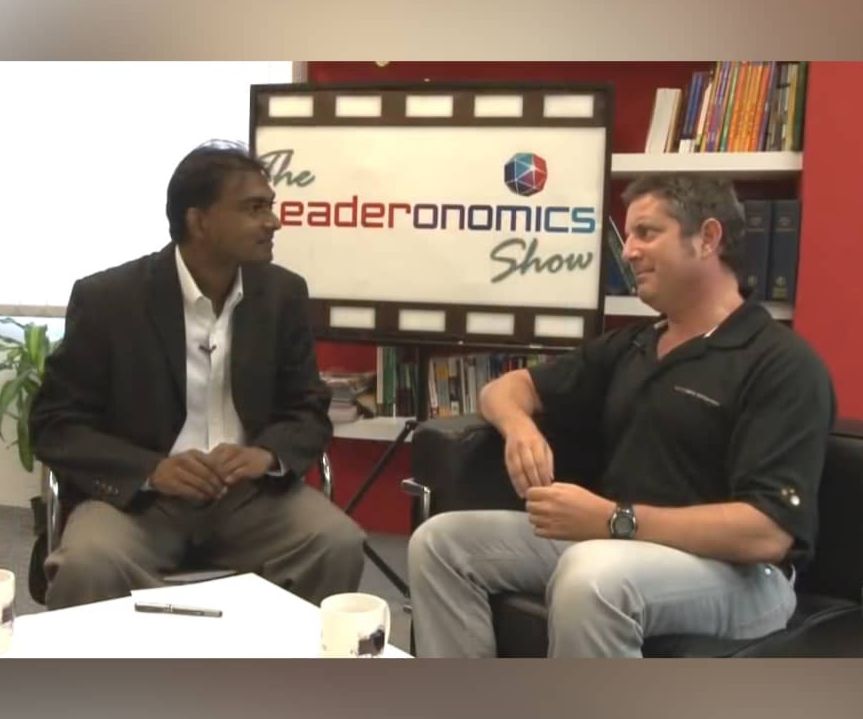Memory And Speed Reading Techniques To Improve Your Productivity

Do you have trouble remembering information?
Do you feel you don’t have enough time to read all the books/documents that you really wanted to read?
Do you fret about information overload?
In today’s information age, a good memory and the ability to read faster are two skills that are overlooked and under-utilised. Fortunately, both the skills can be learnt! You can train yourself to remember better and read faster.
When people come to know that I can memorise the sequence of a 2,000-digit number; remember the exact sequence of seven decks of playing cards after seeing them only once; broke a Guinness World Record in memory, the first thing they ask me is whether I am gifted!
The truth is I had a terrible memory to begin with. By consciously training myself over many years, I can now do all those seemingly amazing things!
And the good news is, if I can do it, then anyone else can do it too. What is required is the knowledge of the right techniques and good practice.
Maximising Your Memory
The process of memory has three stages, called the three Rs:
· Registration
· Retention
· Recall
Registration is the process of storing information in your brain. Retention is your ability to hold the information in your brain for as long as you want. Recall is your ability of bringing out the information from you brain when you need it.
What is important to note is that 95% of memory problems are because of poor registration. And that’s a lot. If you are saying, “I have a poor memory”, the chances are, you have poor ways of registering information in your brain.
Therefore, what we need to concentrate on is how to register the information in a proper way so that we can retain it well and recall it when we need it.

Lets now apply the VAP technique in two important areas:
1 Remembering lists:
Remembering lists is a great way to begin practising memory techniques. Let’s say you have to remember the following list of tasks (to-do list):
· Photocopy important documents

· Deposit money in bank
· Call Raymond
· Book air ticket
· Buy strawberry jam
The first thing you need to do is to convert each of those tasks into images (visualisation). Choose an image that will help you to remind the task. The images could be: photocopy machine, ATM, Raymond, aeroplane, and strawberry jam.
Now, it’s time to associate. Make sure that the associations are done in a fun way. The objective here is to have fun (pleasure) while remembering. One possible way to associate the five words is:
You switch on the PHOTOCOPY MACHINE. Out comes a page with a picture of an ATM on it. Who’s withdrawing money from the ATM? Yes, it’s RAYMOND. RAYMOND then boards an AEROPLANE. Inside the aeroplane, he is surprised to see everyone eating STRAWBERRY JAM.
That’s it! Now try to recall the words. You will be able to remember the words (and the tasks) easily.
The same technique can be used to remember shopping lists, the main points of a speech or a presentation, items on a checklist and other lists.
2 Remembering names of people:
You have probably experienced meeting someone you remember speaking to at a prior event but whose name you just cannot recall. It’s embarrassing, isn’t it? If you are in sales and you forget your client’s (or a prospective client’s) name, it may even cost you the sale.
On the other hand, calling your clients by their names will leave an indelible impression on their minds, which could ultimately lead to better business relationships.
Most people can’t remember the names because most names can’t be visualised. When you meet someone, try converting his or her name into a picture.
Let’s say you meet someone whose name is Nishant (my name). This name sounds very similar to Nissan (car). To remember my name, visualise me driving a Nissan car!
Here, you are visualising (V) my name. You are associating (A) the name with a picture. And this is a fun process – pleasure (P)
Here are some more ideas for names:

· Seh Leng (SAILING on a boat)
· Tim (always looking at the TIME (watch))
· Jennifer (visualise JENNIFER ANISTON)
· Deepti (DIP TEA bags)
In the beginning, you will find this a little time-consuming. Like all skills, you will get better in this too with practice.
Increasing Your Reading Speed
In today’s fast-paced, information-based business world, successful results often depend on our ability to read and process information quickly.
We are all faced with overflowing inboxes full of e-mails, enquiries, reports, proposals, plus faxes, letters, minutes and other documents. It’s easy to feel overwhelmed by the huge volume of material we need to read and process.
Speed-reading can help you to read and understand written information much more quickly. This makes it an essential skill in today’s offices where you have to master large volumes of information quickly.
Many people seem to have a lot of misconceptions about speed reading. The following are the three frequently asked questions:
1. Is it really possible to read faster?
The answer is yes! The average reading speed of most people is only about 200 – 250 words per minute (wpm). If you use effective speed reading techniques, it is very much possible to double or even triple your reading speed to 500 – 700 wpm.
In 2007, the six time world champion speed reader Anne Jones read Harry Potter and the Deathly Hallows in a record breaking 47 minutes and one second – 4,251 words per minute. During my workshops, it is very common for the participants to easily double their reading speeds.
2. Does speed reading spoil the enjoyment of reading?
Absolutely not. If anything, speed reading enhances the enjoyment of reading because you will be able to concentrate for longer periods and you will have fewer reading irritations usually caused by bad reading habits.
3. If I read faster, does my comprehension go down?
If you eliminate bad reading habits, it is very much possible to maintain your comprehension (and even comprehend better) while you read faster.
Some of the bad reading habits are:
Reading one word at a time: We have always been taught to read word by word to understand the information better. However, this is exactly the reason why people read slowly. Speed readers train their eyes to view more words at a single glance thereby increasing their “eye span”.
Re-reading what you have just read: This is called as “regression”. Many people either consciously or sub-consciously re-read what they have just read, just to make sure if they read it correctly! This is a huge waste of time and energy.
Now that we have cleared the wrong notions about speed reading, let’s see what can be done to improve your reading speed and maintain your comprehension. Here are some action points:
1. Measure your current reading speed
Most people don’t even have clue about their current reading speed. If you want to increase your reading speed, it’s only obvious that you should know your current speed.
Take any article. Count the number of words. Time yourself. Divide the number of words with your time (in seconds). Multiply this with 60 to get your speed in words per minute (wpm)
2. Do wide-reading
Most of us tend to read similar types of reading material all the time. If you want to improve you reading speed, you must be comfortable with reading any kind of material. So, keep reading all kinds of material: fiction, non-fiction, journals, novels etc.
3. Increase your eye span
Draw four parallel vertical lines on the article you are reading, so that you have around three to four words (one chunk) between two lines. Try to focus and read the whole chunk at one glance, instead of reading word-by-word.
Once you are comfortable with this, draw three parallel lines to increase the size of the chunk. This way you will slowly increase your eye span. Remember that you don’t have to draw lines forever. You have to do this initially to train your eyes to increase your eye span.
4. Avoid distractions
As simple as it may seem, most people allow themselves to get distracted. Once you are distracted, you don’t usually start from where you left, but you have to re-read few sentences (or sometimes few paragraphs) to remind you of the context.
Preferably, read during those times where the chances of distraction are minimal. And yes, you can turn off the email alert sounds on your computer!
5. Read with an objective
Setting your objectives at the beginning of the reading sessions goes a long way in ideally using your time and effort.
Are you reading to fish out particular information? Are you reading to prepare for an exam? Are you reading for pleasure?
Depending on the objective, you may have to either read it slowly or skim through it. Frame questions starting with: Why, Who, What, Where, When and How to set your objectives. This will save a lot of time and hence aiding you in increasing your reading speed.
Nishant Kasibhatla is a Guinness record holder (2011) and a grand master of memory based in Singapore. He is an author, speaker and trainer with more than 16 years’ experience in conducting talks and workshops in the areas of memory improvement, speed-reading, focus and success-mindset. To know more about Nishant’s work, and to subscribe to his free newsletter, visit www.RememberNishant.com . Click here for more articles.
Leadership
This article is published by the editors of Leaderonomics.com with the consent of the guest author.





